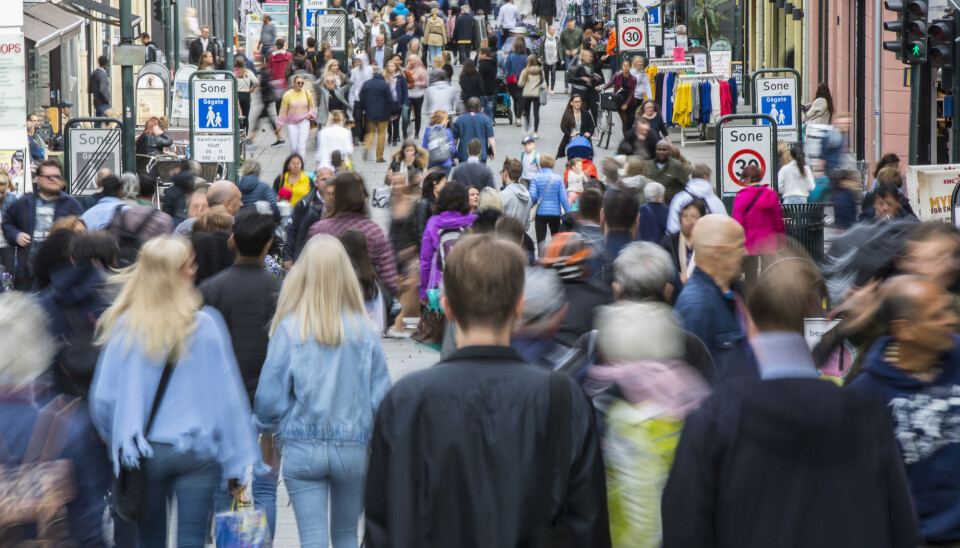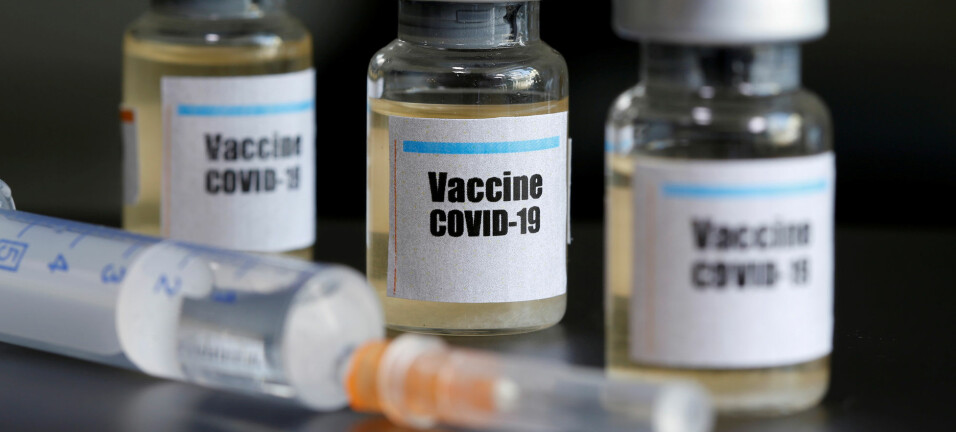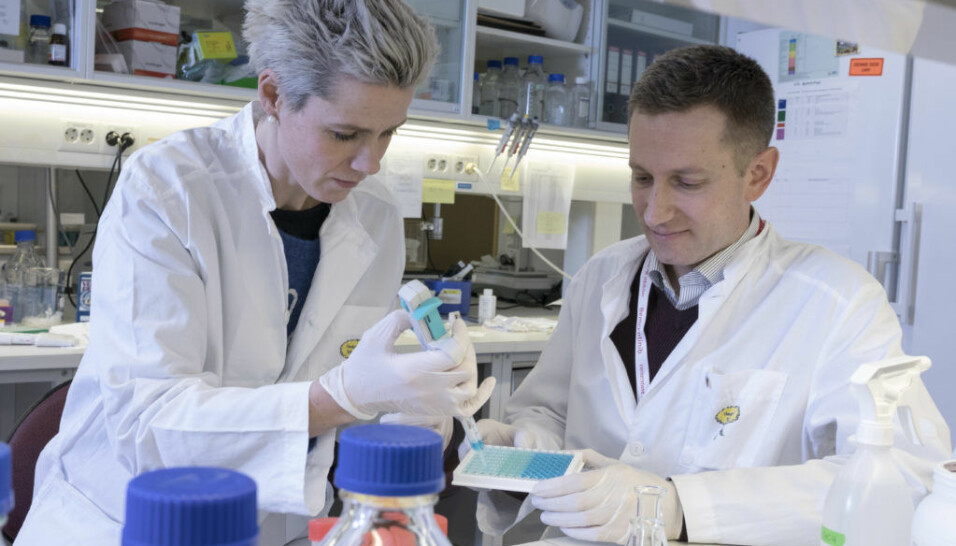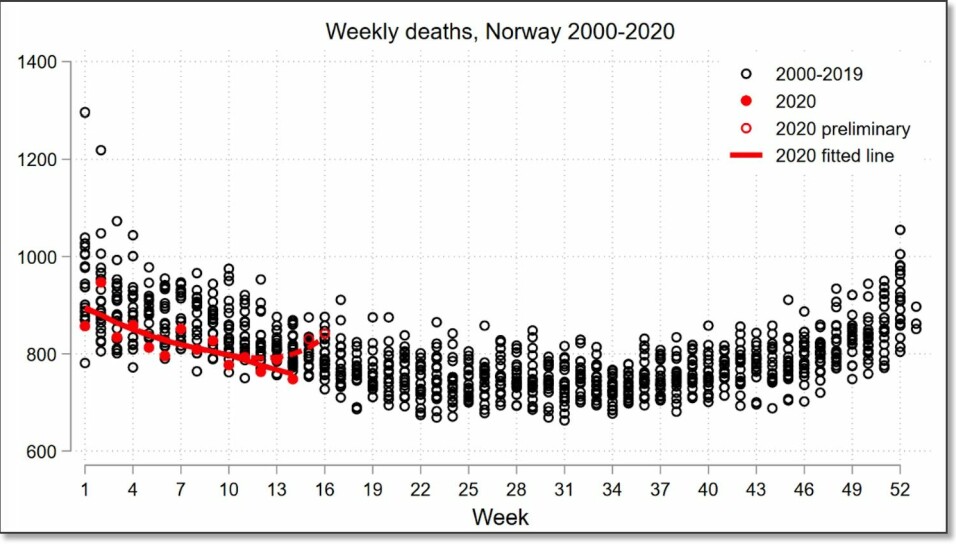
Here’s how Norway’s public health institute will figure out what to do if the coronavirus flares up again
A new mathematical model used by the Norwegian Institute of Public Health (NIPH) is like a tiny laboratory inside a computer, says the head of the institute’s modelling group.
Norway is gradually re-opening, which raises the risk of COVID-19 infections quickly flaring up again. What should the country do then?
“The data we have indicate that only a small percentage of the Norwegian population has been infected with the coronavirus SARS-CoV-2 to date. That means there’s a real possibility that the epidemic may erupt again in one or more waves. Then new measures may be needed,” says Birgitte Freiesleben de Blasio, head of the modelling group at the Norwegian Institute of Public Health (NIPH), to sciencenorway.no.
Her boss, Camilla Stoltenberg, has warned against a new shutdown in Norway if the infection flares up again.
But if Norway needs to undertake new measures to control the virus, it’s best if the authorities can prioritize actions that slow the infection the most — without costing society too much.
That’s why researchers at the Norwegian Institute of Public Health are working to put in place a new mathematical model that can distinguish between the effect of closing schools, having a home office or limiting the number of people that can gather in one place, to name some examples.
The model is a simulation of Norwegian society and is much more detailed than the other models the institute researchers have used to date.
"The model is a kind of laboratory inside your computer, where it’s possible to explore many different scenarios," de Blasio said at a lecture at the Norwegian Academy of Science and Letters on April 23.
Requires a huge amount of information
The mathematical model is a kind of computer-based virtual society that includes all Norwegian inhabitants. The researchers call this an individual-based model.
It differs from the model the institute has used to calculate the reproduction number R, which you can read more about in this article.
The new model is like a virtual community with 5.3 million people. These virtual Norwegians are living in families or alone, living in the countryside or in the city, going to work or school or staying home, de Blasio says to sciencenorway.no.
The researchers have taken care to include a lot of information into the model, including data from Statistics Norway.
“If you want to describe a virtual society with households and kindergartens and schools, you almost have to empty an entire statistical bank into the model,” says de Blasio.
The model allows researchers to close schools or order virtual inhabitants to work from home offices.
In other words, they can allow the residents of the virtual community to test different measures to see what happens to the spread of infection.
“This allows us to elucidate the effect of people working from a home office, of the importance of contacts in ‘the public space’ and in schools and kindergartens. And the importance of people with symptoms who stay at home in quarantine,” de Blasio says.
NTNU already has the same type of model
But the researchers at the Institute of Public Health have not yet published any results from the new model.
“We are working on the model and writing a report. It’s difficult to say when the results can be published,” de Blasio wrote in an email to sciencenorway.no.
At the same time, researchers at the Norwegian University of Science and Technology (NTNU) have already published results from a similar individual-based mathematical model for COVID-19. You can read more about this in an article from NTNU.
The head of the NTNU COVID-19 Task Force, Stig William Omholt, doesn’t want to criticize the Institute of Public Health researchers for having spent time getting results from the new model.
“There are good people working in the modelling group at NIPH, and they have been under tremendous pressure for a long time. So I think it's just that they have had to prioritize the most urgent things that they have handled with other model approaches,” writes Omholt to sciencenorway.no.
Could mobilize several research groups
Omholt thinks the focus should rather be on Norwegian authorities. He believes that they should have made it possible for more researchers to help create the infection models at the Institute of Public Health.
“It amazes me that the authorities have not been more proactive in making financial arrangements for mobilizing and organizing a research portfolio around the modelling work at the Institute of Public Health. The authorities could then make greater use of the considerable intellectual capital that exists at Norway’s universities in modelling and management of complex systems,” Omholt wrote to sciencenorway.no.
Omholt says that many researchers who work with other types of mathematical models on a daily basis could easily adapt to working with the spread of COVID-19 instead.
“This mobilization would involve minimal cost and probably give a return on invested capital in the form of new and better management tools that would make any hedge fund manager green with envy,” Omholt wrote.
Many simulations
De Blasio says that what takes the most time is to make the individual model as close as possible to reality.
“We have created an internal note based on results from the individual-based model. Based on the results, we adjust the assumptions and revise the model in collaboration with NIPH epidemiologists,” she wrote in an email to sciencenorway.no.
The problem is that scientists around the world do not quite know precisely how the coronavirus spreads.
This means that there are many uncertain numbers in the model. One of the things researchers do to compensate for all the uncertainty is to run many simulations.
“We vary some key parameters that we’re uncertain about. We run the simulation many times. And then we vary a parameter and run even more simulations. And we do the same thing for all parameters,” de Blasio says.
With such a complex model and so many simulations, the calculations can take several days to complete, the researcher explains.
Data from the Smittestopp app
One of the things scientists do not know enough about is how Norwegians actually move around in society. And where people really get infected. We still do not know whether we are most often getting infected in our homes or out in the community, de Blasio says.
Now scientists are waiting for information from the Norwegian infection tracking app, Smittestopp, about exactly these issues.
“Data from the Smittestopp app and other digital tools will provide important information about when and where people are in contact. We’ll also get important information from studies that follow dispersal within families and schools or kindergartens,” says de Blasio.
Read more about the Smittestopp-app in this article: A Norwegian virus app to help stop the spread of COVID-19
All this new information about how Norwegians behave and how the virus actually spreads in Norwegian society can be used to improve the model.
That kind of specification is crucial for it to be used to say something about which measures should be prioritized if the infection flares up again.
Translated by: Nancy Bazilchuk
———


































